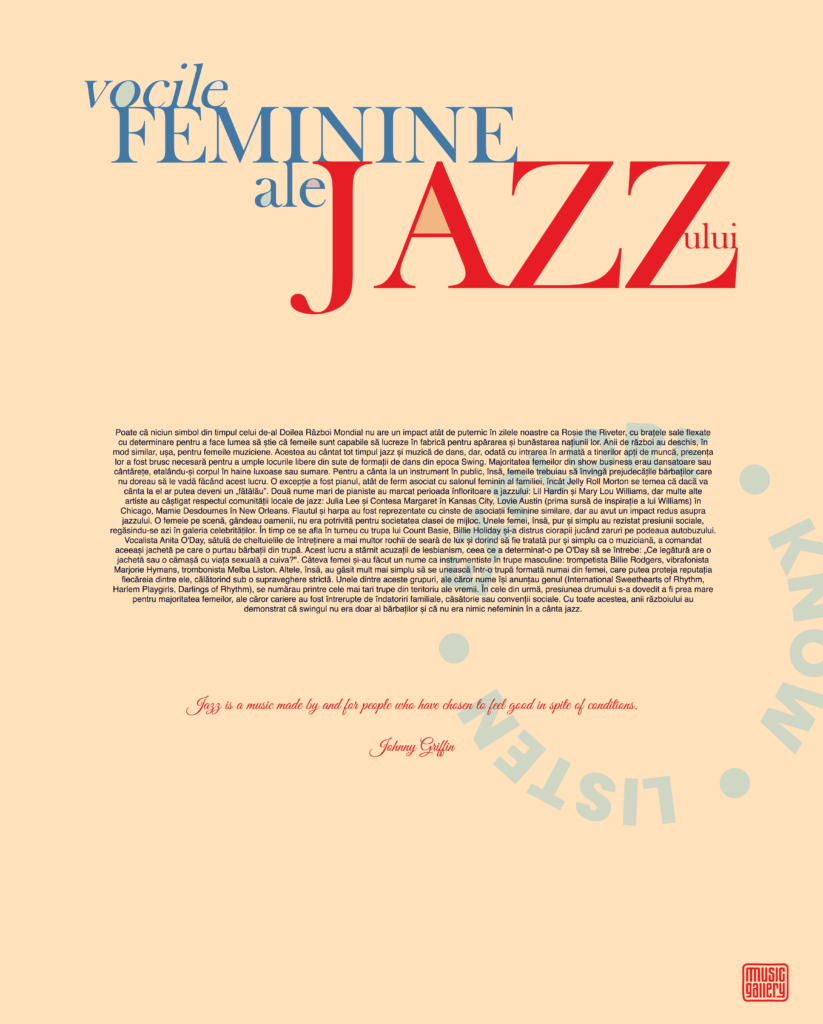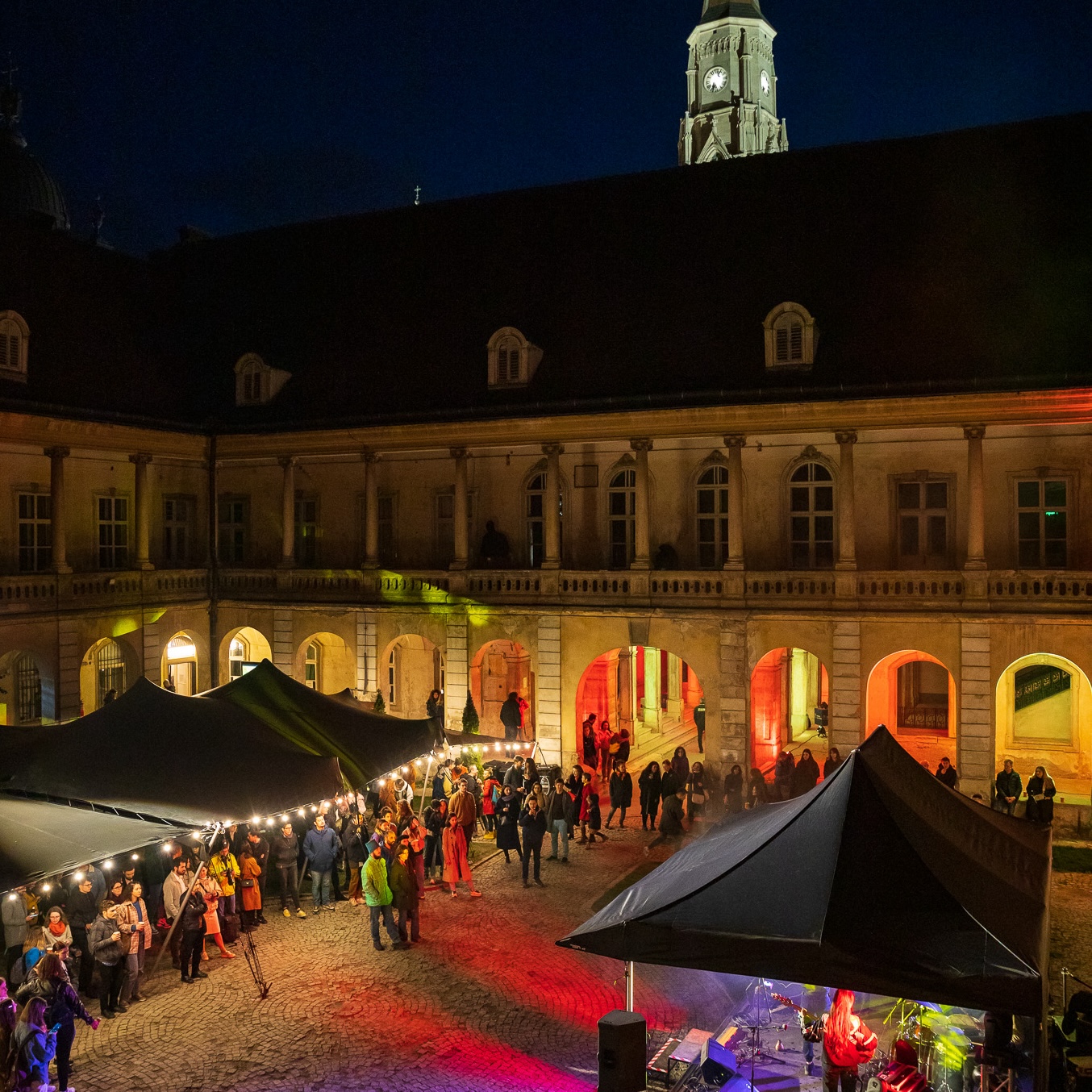FEMININE VOICES

(P44) THE FEMININE VOICES OF JAZZ
Perhaps no symbol from the time of World War II has as powerful an impact today as Rosie the Riveter, with her flexed arms determined to let the world know that women are capable of working in factories for the defense and welfare of their nation. Similarly, the war years opened the door for female musicians. They had always played jazz and dance music, but with the enlistment of young men into the military, their presence was suddenly needed to fill the vacancies in hundreds of Swing-era dance bands. Most women in show business were dancers or singers, displaying their bodies in luxurious or skimpy clothing. To play an instrument in public, however, women had to overcome the prejudices of men who did not want to see them do it. An exception was the piano, so firmly associated with the feminine parlor of the family that Jelly Roll Morton feared that if he played it, he might become a “sissy”. Two great pianist names marked the flourishing period of jazz: Lil Hardin and Mary Lou Williams, but many other artists gained the respect of the local jazz community: Julia Lee and Countess Margaret in Kansas City, Lovie Austin (Williams’ first inspiration source) in Chicago, Mamie Desdoumes in New Orleans. The flute and harp were represented with honor by similar women’s associations, but had a limited impact on jazz. A woman on stage, people thought, was not suitable for middle-class society. Some women, however, simply resisted social pressure, now finding themselves in the gallery of celebrities. While on tour with Count Basie’s band, Billie Holiday destroyed her stockings playing dice on the bus floor. Vocalist Anita O’Day, tired of the expense of maintaining several luxury evening gowns and wanting to be treated simply as a musician, ordered the same jacket that the men in the band wore. This sparked accusations of lesbianism, causing O’Day to wonder, “What does a jacket or shirt have to do with someone’s sex life?”. Some women made a name for themselves as instrumentalists in male bands: trumpeter Billie Rodgers, vibraphonist Marjorie Hymans, trombonist Melba Liston. Others, however, found it much easier to join an all-female band, which could protect the reputation of each of them, traveling under strict supervision. Some of these groups, whose names announced their gender (International Sweethearts of Rhythm, Harlem Playgirls, Darlings of Rhythm), were among the hottest bands of the time. Eventually, the pressure of the road proved too much for most women, whose careers were interrupted by family duties, marriage, or social conventions. Nevertheless, the war years demonstrated that swing was not just for men and that there was nothing unfeminine about playing jazz.
Jazz is a music made by and for people who have chosen to feel good in spite of conditions. – Johnny Griffin
